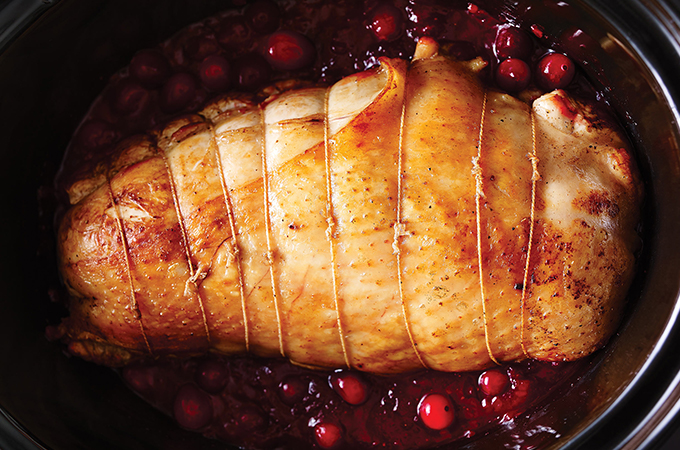Cranberries as far as the eye can see
Upon our arrival at the fields of Notre-Dame-de-Lourdes, in the Centre-du-Québec region, huge basins filled with berries floating in water were waiting for us.
In 2000, the Lemoine family embarked on the adventure of growing cranberries with the Fruits d’Or company. In 2015, they launched the Patience Fruits et Co. brand, specializing in production of organic cranberries. The berries are grown on six acres of land, each producing around 40,000 pounds of cranberries.
While we’re left dazzled by the sea of red before us, Simon Bonin, agronomist for the company, begins to tell us the long process of growing the berry.

A fruit grows in the sand
Centre-du-Québec is a tiny paradise for cranberries. In fact, 80% of the province’s producers are located there. Why? Because the ground there is covered with sand from the prehistoric Champlain Sea, which retreated more than 10,000 years ago. Not many crops can grow in this arid soil devoid of organic matter, but it’s where cranberries thrive.
“There are other cranberry crops in Quebec, around the Lanaudière and Lac Saint-Jean regions, but there is less sand. Here, some places can be four or five metres deep with sand, which can’t be found elsewhere,” explains Simon.
Every four years or so, the field is rejuvenated with the spreading of a new layer of sand. This makes it possible for new buds to grow. During winter, the field is flooded to protect it from the cold, and that is when they take the opportunity to cover the ice with sand. Once the ice melts, the sand is deposited on the field.
Fruits d’Or is a world leader in organic cranberries with Patience Fruits et Co. It is also the second largest producer of cranberries in all categories, behind only giant Ocean Spray. Quite a success for such a small fruit!
A slow process
The word “patience” in the company’s name was not a random choice. It was inspired by the slow production process of the cranberry. It takes 16 months from planting to harvest. The use of organic fertilizer also explains this long growth. Once the cranberries are planted, they regrow each year, but it takes three years before you can see the first berries appear. Some fields in Quebec have been producing fruit from the same plants for about 40 years, while there are fields in the United States that have existed for 150 years! However, their production is much lower.

Water harvest
“Cranberries don’t grow in water,” explains Simon, who sets the record straight on this pretty common assumption. It is only at harvest time that the fields are flooded. By filling the basins with water, the berries detach from the plants and are therefore much easier to pick up. Most of the water used comes from melted snow. The field is shaped to collect water and drainage ditches have been built in the forests surrounding the area.
Dressed in waterproof suits, we have fun filling our little baskets, which we simply slide along the surface of the water until they are filled to the brim. But a few feet away from us, the employees are busy gathering berries in a corner of the field to vacuum and clean them mechanically before they are transported via truck to the processing plant.

With our baskets full of cranberries, we arrive home with plenty of cooking and baking ideas. What to make? Here are a few recipes starring the tart little berry:

Cranberries
Cranberry Chutney


Savoury Breads
Cranberry and Chocolate Bread


